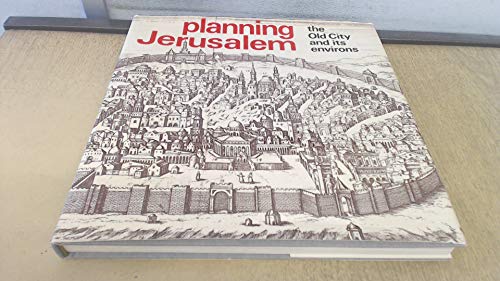Sharon Arieh Planning Team Outline (1 results)
FeedbackSearch filters
Product Type
- All Product Types
- Books (1)
- Magazines & Periodicals (No further results match this refinement)
- Comics (No further results match this refinement)
- Sheet Music (No further results match this refinement)
- Art, Prints & Posters (No further results match this refinement)
- Photographs (No further results match this refinement)
- Maps (No further results match this refinement)
- Manuscripts & Paper Collectibles (No further results match this refinement)
Condition
- All Conditions
- New (No further results match this refinement)
- Used (1)
Binding
- All Bindings
- Hardcover (1)
- Softcover (No further results match this refinement)
Collectible Attributes
- First Edition (1)
- Signed (No further results match this refinement)
- Dust Jacket (1)
- Seller-Supplied Images (No further results match this refinement)
- Not Print on Demand (1)
Free Shipping
- Free Shipping to U.S.A. (No further results match this refinement)
Seller Rating
-
Planning Jerusalem; The Old City and its Environs
Published by Weidenfeld and Nicholson, Jerusalem, 1973
ISBN 10: 0297995596 ISBN 13: 9780297995593
Seller: Ground Zero Books, Ltd., Silver Spring, MD, U.S.A.
First Edition
Hardcover in slipcase. Condition: Good. Dust Jacket Condition: Part of DJ present. Chava Mordohovich (Art Editor) (illustrator). Presumed First Edition, First printing. The format is approximately 11 inches by 11 inches, and comes with a slightly larger slipcase, which as some wear and soiling. {8], 211, [1] pages. Text is primarily in English with some Hebrew. Illustrations (drawings, photographs, maps --including color and overlays, fold-out). Bibliography. The DJ has been roughly trimmed at top and bottom edges. There is some weakness in the front board. Arieh Sharon (May 28, 1900 - July 24, 1984) was an Israeli architect and winner of the Israel Prize for Architecture in 1962. Sharon was a critical contributor to the early architecture in Israel and the leader of the first master plan of the young state, reporting to then Prime Minister, David Ben-Gurion. Sharon studied at the Bauhaus in Dessau under Walter Gropius and Hannes Meyer and on his return to Israel (then Palestine) in 1931, started building in the International Style, better known locally as the Bauhaus style of Tel Aviv. Sharon built private houses, cinemas and in 1937 his first hospital, a field in which he specialized in his later career, planning and constructing many of the country's largest medical centers. During the 1947-1949 Palestine war in 1948, Sharon was appointed head of the Government Planning Department, whose main challenge was where to settle the waves of immigrants who were arriving in the country, and in 1954 returned to his private architectural office. As the city of Tel Aviv rose from three and four story buildings to multistory buildings in the sixties and seventies, Sharon's office designed many high-rise buildings for the government and for public institutions. This work addresses The Townplanning Area; The Plan in the Context of History; The Landscape; The Walls and Gates of Jerusalem; Structure and Architecture of the Old City; The Old City Survey and Outline Scheme; Earlier Townplanning Schemes; The Outline Scheme of the special Zone, and Projects. From the Introduction "the plan that is presented in the following pages envisages a living city, a unity between the old and the new. We hope that those who study it will understand how important the Old City is to us who must plan for it; how much we have sacrificed and are willing to continue to sacrifice for its sake. We hope that we can continue to advance and progress along the long road that lies ahead of us that that we will have the aid of men of goodwill everywhere in our task. When the State was created in 1948 the overwhelming majority of the population was concentrated in a narrow coastal strip. One of the main tasks of the newly established Government Planning Department, headed by Sharon and directly responsible to the Prime Minister's Office under David Ben-Gurion, was to find solutions for the great waves of immigrants who entered Israel after the declaration of Independence. The team consisted of 180 urban planners, architects, engineers and economists. They set up a National Outline Plan, dividing the country into planning regions in accordance with economic resources, geographic features, communication factors and historical background. The regional structure would be completed by the development of a regional urban center - a medium-sized town. Thus the plan provided for the establishment of 20 new towns, dispersed all over the country and established guidelines for industrial estates to be located close to the new towns. Sharon's plan led to the creation of development towns for example: Beit She'an, Kiryat Gat, and Upper Nazareth. Agricultural regions were planned expanding into the southern Negev desert. A national water plan was set up that would carry water from the surplus areas in the north to the dry, water-poor areas in the south. And a network of National Parks was devised, spreading all over the country, exploiting the existing landscape features, nature reserves and historical sites. At the end of 1953, Sharon was invited by the United Nations to serve as a planning expert.


